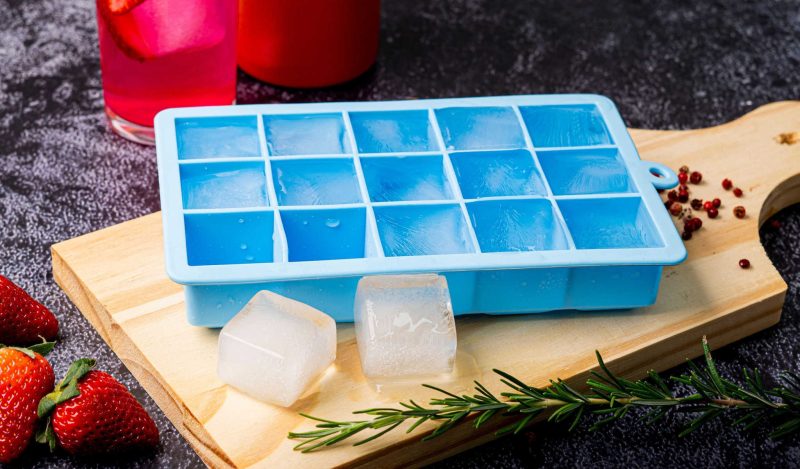Sometimes I hate weekends. Weekends should be that respite from the drudgery and concerns of the week and allow some time for reading what I want, rather than what I must. Sometimes – well, often – it just doesn’t work out that way.
A couple of weekends ago on Saturday. I had just put on my cycling shoes so I could hop on my bike that I have set up as an exercise bike. Before I could climb on the bike, my wife delivered the dreaded words, with a level of passion, “There’s water coming through the ceiling in the basement.” It’s actually fortunate that she saw the wet spot since we don’t spend a lot of time in the basement.
I consider myself a reincarnation of Sherlock Holmes. Therefore I leapt into action looking for data. Where is the water coming from? I started ripping off cedar boards to find the drips. That led to trying to divine where the water originated above me. The most likely culprit was the water feed to the ice cube maker in the refrigerator. A truly first world problem: betrayed by my automatic ice cube maker.
After acquiring help to move the refrigerator, yes, there it was, a leaky valve leading to the ice maker. Since the valve itself was leaking, it required turning the water off to the house, and disassembling the valve from its water line. Then off to the hardware store for a replacement. Well, almost. The valve is no longer made, of course, and the helpful young man at the store (where the original came from) had never seen anything like it, but he deftly assembled parts to replace it.
Back to the house. Everything fit. Turn the water on. Leaking. Twist the fixture harder into place with a wrench, and yes, the drip stopped. Unfortunately, by the time the assembled-from-parts replacement valve was tight enough that I had no leaking, the outflow for the ice maker was pointed into the wall directly behind the valve so that reattaching the outflow plastic line would require putting a hole in the wall behind the valve, from the other side of the wall (in the living room), attaching the plastic line, then patching the hole and repainting the wall. At this point I realized I had very expensively, and with great effort, merely capped the water line. Automaticity was officially abandoned.
Being resourceful, I moved to plan B. Now that the leaking was done, I could buy old fashioned plastic ice cube trays online, four of them for about twelve dollars. The four ice cube trays cost just less than a third of the cost of my valve-turned-water-line-cap. And, the ice cube trays came with instructions!
I have survived on the planet long enough that I remember metal ice cube trays. In those days, you poured water from the tap in the tray, put in the ice cube separator, froze the water in the tray, then pulled the handle on the ice cube separator and broke the ice into cubes. Worked fine.
Next came plastic and we figured those out, too. You pour in the water, let the cubes freeze, then twist the tray and the ice pops out. In extreme circumstances you could run hot water over the bottom of the tray to melt the cubes out. Somehow we managed.
Collecting data fits with my Sherlock Holmes self-deceptive self-image. I do collect data for my clinical research in binocularity. But full data is not always easily available or needed in more humble endeavors. At a much younger age and time I could make ice cubes without an in-depth knowledge of the characteristics of the three phases of water, nor in-depth knowledge of then-available refrigeration systems.
But my new ice cube trays came with instructions. Whereas the old plastic trays had a picture on the package of the tray being twisted and the cubes falling out, I now have instructions – six separate steps complete with pictures. They are written in Chinese, Lithuanian and Portuguese. OK. That was an exaggeration. Each step has its instructions in six languages and each language has initials to identify it accurately.
Fill the ice cube compartments just to the fill line, no higher! Oh my goodness. I went too far in one cube compartment. Do I dump the water out and start over from the beginning? No. A straw and sucking lightly can bring the water level down. Just be sure to continue sucking as the straw is withdrawn to avoid backwash. Appropriately filled, we’re ready to move to steps 2 and 3.
Place horizontally (not vertically!) in the freezer and freeze for six to eight hours. Do I have to get up in the middle of the night? That’s probably overthinking. So, freeze the cubes, twist to release, and voila! We have ice cubes.
I’m glad it all worked out. Had I had problems, the company who either made the trays or imported them has online help – seriously. They will respond within 24 hours. That’s a step up from the old days. We were expected to be able to figure out on our own that the water goes in this side, then twist or pound or heat up to get the cubes out when frozen. So much better now.
Those simple instructions are comforting, now that our lives also come with their own set of instructions. Those superiors who somehow missed their destinies in writing instructions for plastic ice cube trays now work in public health. Pay no attention to the accumulated knowledge from prior generations. For goodness sake don’t read for yourselves, despite virtually everything being available online. And at all costs remember that children do not deserve special attention.
Most of us at a young age figured out, thanks to our parents, to stay away from others if we’re sick. It never occurred to us to stay away from others when we’re not sick since we might have something but not know we had something and that something – whatever it was – might make someone else sick since we didn’t stay home from school since we weren’t sick but we should have stayed home anyway for the sake of others because they might get sick. Our parents knew that if we didn’t go to school we wouldn’t learn school-type things and so they sent us off to school, assuming since we weren’t sick…(see above)…and assuming that school was important. In fact, my parents let me know school was important.
Many of us had parents who were skeptical of medications unless the data, usually from news reports or hearing from the trusted family doctor, supported the efficacy of vaccinations. Things like polio. Look at the problems polio creates in kids, then look at how the vaccines are tested as safe and efficacious. Pretty simple deduction. Interestingly, I don’t remember ever seeing anything suggesting it was a duty to society to get the vaccine. You had to get different shots to travel to Europe or South America or Africa. But that was all voluntary. Don’t want the shot? Stay home. You could travel throughout the US without shots – and Canada and Mexico, for that matter. If you went away from touristy areas in Mexico, you just couldn’t give blood for a while.
And we stayed around people. Go to school. Go to church. Go to Sunday School and youth groups and after-school activities. Take the bus where you’re going even though other people are on the bus. Things like social skills need to be developed, but so do immune systems. Talking to people for the most part required face-to-face. Kids were expected to be able to talk to adults. Yes, people talked on the phone. But, phone-time was limited for most of us. There was only one phone in the house, for goodness sake. I don’t remember anyone hiding in their basement playing games by himself. For weeks at a time.
Which does bring up something else: Go outside! We drove our parents nuts, so they sent us outside. Get some fresh air and sunshine. Vitamin D. Get deep breaths of air. Don’t restrict air flow with cloth. Get dirty.
How naive we were. So much better to have instructions. It’s really reassuring to have someone of superior intelligence (I mean, they go by nicknames like “the Science” for goodness sake) let us know that inhaling can kill you, exhaling can kill someone else no matter how good you feel, faces are two-dimensional or are comprised only of two eyes, eyebrows, and a piece of cloth or paper, neurological and social development just happen and require no human interaction to proceed normally, school is only important as an optional part-time occupation functioning to display occasional optional assignments to do on your own, time in front of a screen has no physical consequences, therapies for children such as speech therapy for Down Syndrome kids can happen without face-to-face interaction, and most of all, forget that annoying Helsinki protocol and demands for parents to have informed consent and for kids to give assent to experimentation on themselves by adults who haven’t bothered to test an unneeded-for-children vaccine beyond shooting up a few mice.
I work so much better with instructions, don’t you? See? I just made ice. Top that, you people who think for yourselves.
Join the conversation:


Published under a Creative Commons Attribution 4.0 International License
For reprints, please set the canonical link back to the original Brownstone Institute Article and Author.









